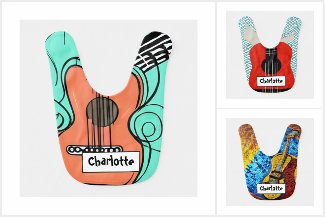What problems can toddler backpacks cause?
- Backpacks can increase the risk of your toddler losing their balance and falling over
- Small parts like zipper tags and labels could be a choking hazard.
- The weight of the backpack can lead to muscle strain and back pain
- On occasion, a backpack that is too heavy can cause tingling, numbness and weakness in arms and hands
- Zipper accidents. Happens to the best of us
- Backpacks are made of non-breathable material which can cause suffocation if they pull it over their heads
- If the straps are too long and gets wrapped around their necks, it can cause strangulation.
- Kids carrying backpacks often don’t realize how much space their pack takes up. Left in aisles, this can be a trip hazard.
When are backpacks for toddlers safe to use?
Your child should be able to walk independently before even considering a toddler backpack. Most children are able to carry a small toddler backpack by the time they are one and a half years old. Even then, there are lots of things to consider when you’re choosing a backpack for your child.What should I look for in a backpack?
- Check that the backpack is just the right size for your toddler.
- The quality of the materials. The best fabric is durable and lightweight. If it’s water-resistant fabric, even better.
- Look at the fabric and stitching. If it’s not strong enough, it could break down after only a few uses.
- Buy a ‘cleanable’ backpack – one that you can wipe down easily or throw in the washer.
- Check if there are adjustable straps. The shoulder straps should also be padded.
- Check if the backpack has a chest strap. This will help keep the backpack balanced on your child’s back, even when they are walking fast or running around.
- Zipped compartments in the main part of the backpack keep objects in place and side mesh pockets for water bottles reduce the chances of getting everything wet inside.
- Choose backpacks with easy-to-open and close zipper tags.
- Velcro straps are an alternative to zips for opening backpacks. This might suit smaller toddlers better.
- Back of the pack should have padding to provide more comfort and protection from book corners and other sharper objects.
- Consider safety features like reflective tape, side pockets and a rain cover for rainy days
- Has an internal pocket for a name tag. Never write your child’s name on the outside of their bag. Personalize it in other ways instead.
How can my child use a small toddler backpack safely?
Here are some tips on how your toddler can wear a backpack safely:- The American Academy of Pediatrics recommends that a child’s backpack be less than 10% of their body weight. The simplest way to measure is to put the backpack on your bathroom scale and it will tell you how much weight is in the bag.
- They should be standing upright while carrying the backpack. If they are leaning forward or backwards, it’s too heavy.
- Make sure the backpack size isn’t too big for your child.
- The straps should fit properly on the shoulders.
- Always fasten the chest or waist strap to keep the weight of the backpack balanced between both shoulders.
- On that note, make sure your child carries the backpack on both shoulders and not just one.
- Pack smartly. Heavier items should be packed at the bottom of the backpack and towards the back.
- The backpack should sit flat on your child’s back.
- Don’t hang lunch bags off the backpack.
Are backpacks with a harness safe for toddlers?
The verdict is out on this one. There are 2 camps of thoughts when it comes to backpacks with a safety harness. As with most things, the answer is ‘it depends’. In general, a backpack with a child leash is safe for toddlers. And it might be a good option if your toddler often tries to run away from you. However, if your child is fighting against the tether and trying to run away from you, the leash can snap back and cause them to fall. If that’s the case, it’s safer not to use a backpack with a harness. Teach them to hold on to your hands while walking instead.Is it safe for toddlers to use backpacks on wheels?
No it’s not. Toddlers are so not ready for backpacks on wheels. There are no appropriately sized rolling backpacks for toddlers. These bags are also way to heavy due to the frame and wheels. Toddlers, even a 3-year-old, would not be able to properly manoeuvre a rolling backpack over uneven ground.What are some safe toddler backpacks on Amazon?
These are some of my favorite toddler backpack brands: Skip Hop has been around since 2003 and is a globally-recognized children’s brand. They have a truckload of toddler backpack options. Check out the Skip Hop Amazon Store. Willikiva is another kid’s brand that has great toddler backpacks. Check out the options here.To wrap up
While it’s find for toddlers to use a backpack when they are steady enough on their feet, you need to make sure you buy the right backpack and that they use it correctly. If you think your toddler has sustained an injury while using their backpack, check in with their pediatrician.Latest posts by Sharon James (see all)
- 19 Spring Birthday Party Ideas for Adults - September 19, 2024
- How can you make your birthday party special? - September 19, 2024
- How To Plan A Unicorn Birthday Party - September 19, 2024

 Check it out on Amazon
Check it out on Amazon Check it out on Amazon
Check it out on Amazon